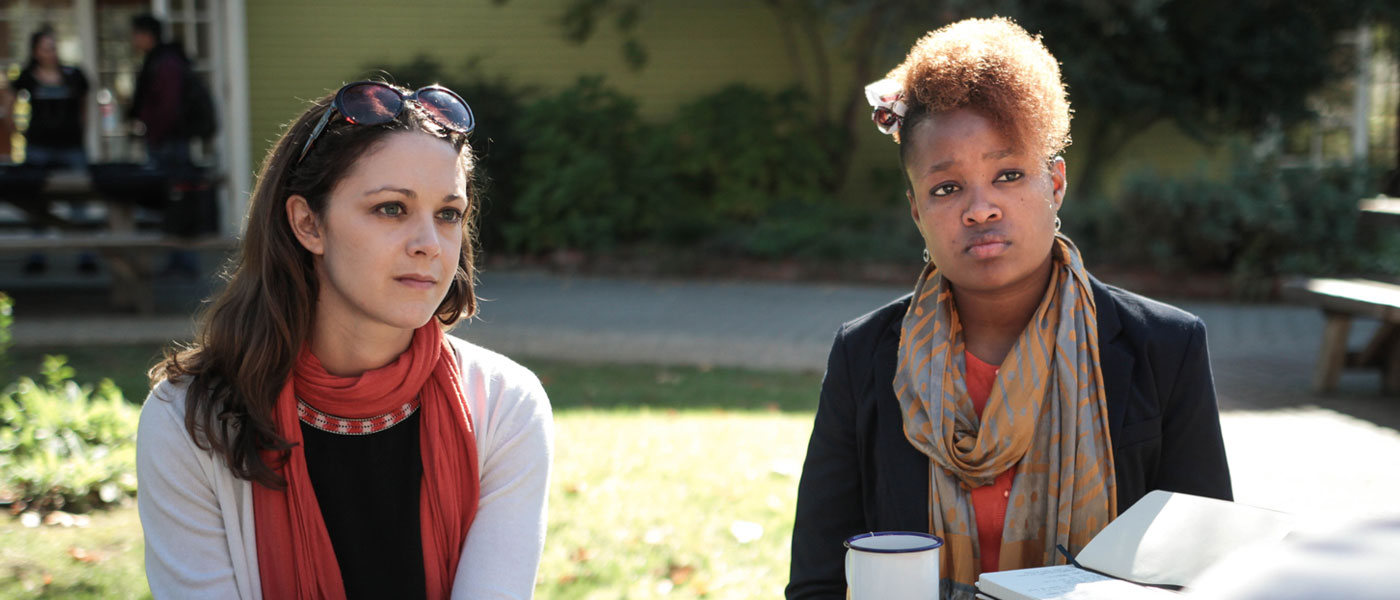A version of this post originally published in February 2015. We reposted it in celebration of International Women’s Day and to provide some exciting Unreasonable updates. Though it took longer than expected, the Unreasonable Capital fund officially launched in January 2016, and we confirm that 100% of our investments will track impact on women and girls in poverty. Stay tuned, as we also plan to roll out a series of stories catching up with all of the Girl Effect Accelerator companies in the coming months.
ht
Today, with so many initiatives focused around women and girls, the conversations around the importance of gender dynamics may feel trendy. I agree. That said, I’m writing this post because I believe this trend is warranted, it’s accurate, and it needs to pick up momentum and transform from a trend to a movement. We have a long way to go in convincing the world about the importance of investing in women and girls globally. Yes, a lot of people are talking about it, but in my mind, not nearly enough.
Focusing our efforts on women and girls, especially those in poverty, is critical for social progress. Tweet This Quote
Focusing our efforts on women and girls, especially those living in poverty, is critical if we are ever going to have a chance at living in a world in which no one is limited by their circumstances. I would argue there is possibly nothing more important that we can rally behind.
Let me answer the question, “Why women and girls?”
It is estimated that 250 million adolescent girls live in poverty1 and are more likely than boys to be uneducated, married at a young age, and exposed to HIV/AIDS. Why should you care? Here are a few statistics from the Girl Effect Factsheet that help illuminate the situation.
- When a girl in the developing world receives seven years of education, she marries four years later and has 2.2 fewer children.2 Yet, in 19 sub-Saharan African countries, secondary school completion rates for adolescent girls fall below 5%.3
- Worldwide, nearly 50% of all sexual assaults are against girls aged 15 years or younger.4 There is a strong correlation between sexual assaults and prevalence of HIV/AIDS. Furthermore, 76% of young people aged 15-25 who live with HIV in sub-saharan Africa are female.
- Girls from poor families are nearly twice as likely to marry before 18 than girls from wealthier families.5 This is concerning in multiple dimensions. For example, child brides have a pregnancy death rate double that of women in their twenties.6
Although international development plays a critical role in changing these dynamics, less than two cents of every international development dollar goes to girls. All of this makes me believe we need to start aggressively looking at new solutions and experimenting with new models, independent of international development, to drive more resources to women and girls in poverty.
It is estimated that 250 million adolescent girls live in poverty and are more likely than boys to be uneducated, married at a young age, and exposed to HIV/AIDS. Tweet This Quote
Moving beyond “why” and focusing on “how”
But talking about the importance of removing constraints for women and girls isn’t enough. Though this conversation is important, it’s time we also go beyond explaining “why” and begin to experiment to better understanding “how.” How we can most effectively impact women and girls in poverty? At Unreasonable, we are doing our best to put our money, actions and focus where our mouth is, and we are always looking for collaborators in the process =).
Less than 2 cents of every international development dollar goes to girls. Tweet This Quote
In November 2014, we launched the Girl Effect Accelerator in partnership with the Nike Foundation (watch the TED-style presentations of the participating entrepreneurs here). This was the world’s first accelerator dedicated to working with entrepreneurs who are positioned to measurably benefit millions of women and girls in poverty (and we really mean it).
Our goal with this partnership was to work with the fastest moving startups in emerging markets who are keen to put a dent on poverty and align their trajectory around key issues that affect women and girls in poverty—issues that their business is uniquely positioned to take on. Each of the ten participating companies agreed to measure their impact on women and girls on a quarterly basis and into perpetuity.
We need to bake in the measurement of how all of our companies at Unreasonable affect women and girls in poverty—not just some of them. Tweet This Quote
We are just now identifying their measurable impact on girls. This data, combined with ongoing conversations with the companies, will allow us to begin to pull insights from our entrepreneurs, further identifying scalable solutions to meet the needs of millions of girls. In the process, we will discover patterns for what is working and equally as important, what is not.
An accelerator isn’t enough
When we were first in conversations with the Nike Foundation around launching the Girl Effect Accelerator, we were thinking of launching a distinct fund devoted exclusively to investing into companies already positioned to benefit girls in poverty. However, upon further reflection, we realized that launching a sidecar fund focused on girls, though impactful, was the wrong posture.
What you measure is an indicator of what you value, and what you measure will ultimately change behavior. Tweet This Quote
Instead, we must bake in the measurement of how all Unreasonable companies affect women and girls in poverty. In May, when my partner Ashok Reddy and I launch Unreasonable Capital, we have agreed to ask 100% of investments in our portfolio to track a core metric highlighting impact on women and girls in poverty.
Yes, there’s always more that can be done and yes, and it will be difficult to draw direct lines of attributable impact for all of our companies. But at a base level, we believe that what you measure is an indicator of what you value. And what you measure will ultimately change behavior.
It’s just the beginning
This is just the beginning for us. We are new to the space of looking at how for-profit entrepreneurs can have a meaningful and measurable impact on the issues surrounding women and girls in poverty. What’s beautiful is we are not alone in this endeavor. As just one example of many, a new series of accelerators oriented around the needs of girls has recently launched called SPRING. SPRING will be launching it’s first regional accelerator in Nairobi this summer and has plans to spread across Africa and cross-continentally in the years to come.
We can change the statistics that unjustly burden women and girls in poverty. Tweet This Quote
In reality, we are standing on the shoulders of giants. We would have never been able to launch the Girl Effect Accelerator without our co-founders at the Nike Foundation, who brought over a decade of experience and expertise around working with girls in poverty to the program. In short, although Unreasonable is entering this space humbly, we are doing so with ardent conviction. We are here to stay. We are hungry to learn. And we are looking to collaborate and conspire with anyone interested in changing the statistics that unjustly burden girls in poverty.
So is focusing efforts on women and girls a trend? For all of our sakes, I desperately hope so, and I hope it is a trend that lasts.
1. http://www.girleffect.org/about/
2. Levine, Ruth, Cynthia B. Lloyd, Margaret Greene, and Caren Grown. Girls Count a Global Investment & Action Agenda: A Girls Count Report on Adolescent Girls’, Center for Global Development. Girls Count, 2009, http://www.cgdev.org/files/15154_file_GC_2009_Final_web.pdf
3. Lloyd, Cynthia and Juliet Young. ‘New Lessons: The Power of Educating Adolescent Girls’. Population Council 2009 pp. 23. Retrieved 25 March 2011 from http://www.popcouncil.org/pdfs/2009PGY_NewLessons.pdf
4. Garcia-Moreno, Claudia; Jansen, Henrica; Ellsberg, Mary; Lori Heise and Charlotte Watts. ‘Multi-Country Study on Women’s Health and Domestic Violence Against Women’. World Health Organization 2005. Retrieved from http://whqlibdoc.who.int/publications/2005/924159358X_eng.pdf
5. ICRW 2007 – Knot Ready, p9. Accessed on Aug 30 2012, http://www.icrw.org/files/publications/Knot-Ready-Lessons-from-Indiaon-Delaying-Marriage-for-Girls.pdf
6. Bruce, Judith. Reaching The Girls Left Behind: Targeting Adolescent Programming for Equity, Social Inclusion, Health, and Poverty Alleviation. Prepared for: ‘Financing Gender Equality; a Commonwealth Perspective,’ Commonwealth Women’s Affairs Ministers’ Meeting, Uganda, June 2007, http://www.popcouncil.org/pdfs/Bruce2007CommonwealthFullText.pdf



